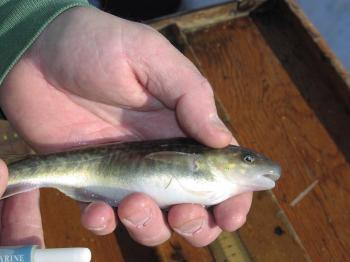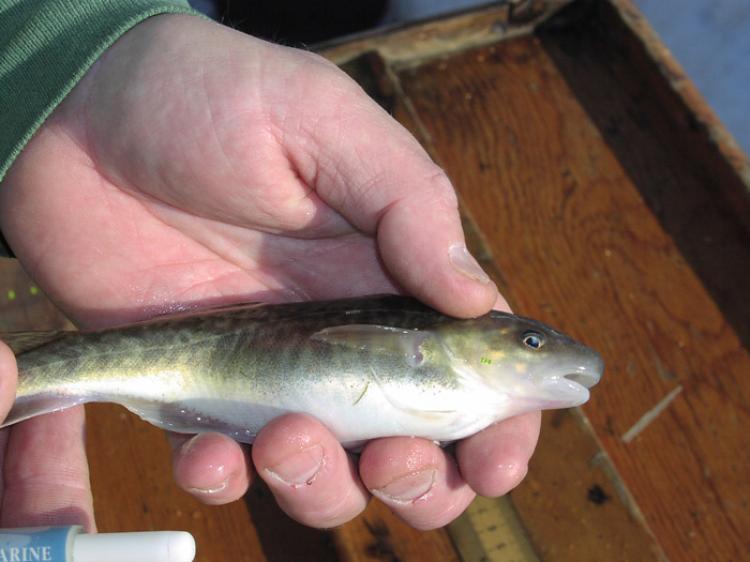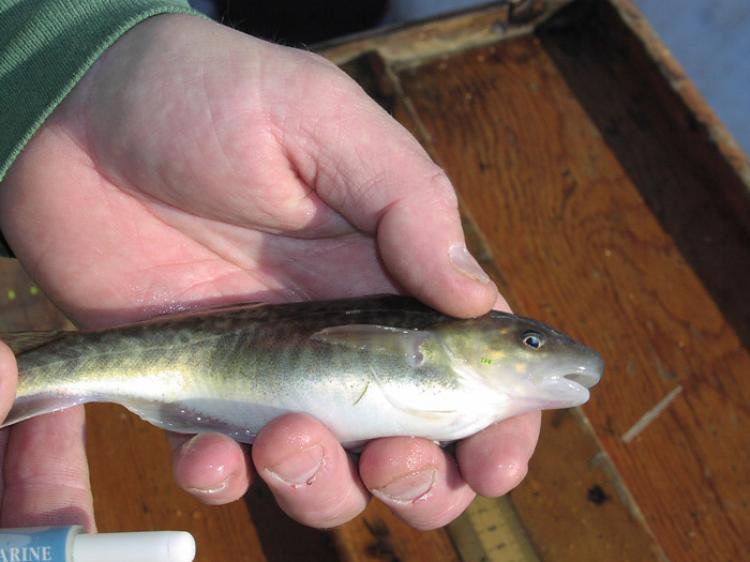One breed of coastal fish is demonstrating an unexpected genetic resistance to prolonged chemical exposure. While decades of polychlorinated biphenyl (PCB) contamination have devastated many Hudson River species, scientists have discovered that the Atlantic tomcod has thrived in the hostile environment. Findings were reported in the Feb. 17 issue of the journal Science.
Researchers from the Woods Hole Oceanographic Institution (WHOI), New York University (NYU) and the National Oceanic and Atmospheric Administration (NOAA) have teamed up to investigate the key to the tomcod’s survival. They discovered that a change in a single genetic receptor is responsible for the tomcod’s PCB resistance.
Although similar reactions have been observed with insects developing a resistance to certain insecticides, and bacteria to antibiotics, according to Isaac Wirgin of NYU’s Department of Environmental Medicine and leader of the study, this demonstrates the first observed mechanism of resistance observed in any vertebrate population.
As researchers examined the tomcod’s ability to respond to PCBs, they found that primary changes occurred in a receptor gene called AHR2, which they say is important in mediating toxicity in early life stages and can control sensitivity to PCBs.
In his work over the last 16 years in the Acushnet River Estuary near New Bedford, Mass., WHOI Senior Scientist Mark E. Hahn has found the same gene involved in controlling other fishes’ responses to PCBs.
According to Hahn, the Hudson River tomcod are not as sensitive to PCBs because the mechanism responsible for the toxic reaction is lessened within these fish.
This may be good news for the tomcod perhaps, but not to the predators and humans that eat them. “The tomcod survive but they still accumulate PCBs in their tissues and pass it on to whatever eats them,” Hahn said in a statement.
Does this mean the tomcod is a chemically invincible species? Probably not. According to Hahn, the genetic changes the tomcod developed in response to PCBs may actually make them “more sensitive to other things,” and affect their ability to break down certain other harmful chemicals, such as PAHs (polycyclic aromatic hydrocarbons).
“So it’s conceivable that the Hudson River tomcod could be more susceptible to PAHs because it cannot degrade them properly,” added Hahn.
Ironically, a lack of PCBs may also harm the genetically specialized Hudson River tomcod. Scientists explain that the absence of the toxic substance that triggered its adaptation might leave it at a disadvantage.
“If they clean up the river, these fish may need to adapt again to the cleaner environment,” said Wirgin in a press release.
Researchers from the Woods Hole Oceanographic Institution (WHOI), New York University (NYU) and the National Oceanic and Atmospheric Administration (NOAA) have teamed up to investigate the key to the tomcod’s survival. They discovered that a change in a single genetic receptor is responsible for the tomcod’s PCB resistance.
Although similar reactions have been observed with insects developing a resistance to certain insecticides, and bacteria to antibiotics, according to Isaac Wirgin of NYU’s Department of Environmental Medicine and leader of the study, this demonstrates the first observed mechanism of resistance observed in any vertebrate population.
As researchers examined the tomcod’s ability to respond to PCBs, they found that primary changes occurred in a receptor gene called AHR2, which they say is important in mediating toxicity in early life stages and can control sensitivity to PCBs.
In his work over the last 16 years in the Acushnet River Estuary near New Bedford, Mass., WHOI Senior Scientist Mark E. Hahn has found the same gene involved in controlling other fishes’ responses to PCBs.
According to Hahn, the Hudson River tomcod are not as sensitive to PCBs because the mechanism responsible for the toxic reaction is lessened within these fish.
This may be good news for the tomcod perhaps, but not to the predators and humans that eat them. “The tomcod survive but they still accumulate PCBs in their tissues and pass it on to whatever eats them,” Hahn said in a statement.
Does this mean the tomcod is a chemically invincible species? Probably not. According to Hahn, the genetic changes the tomcod developed in response to PCBs may actually make them “more sensitive to other things,” and affect their ability to break down certain other harmful chemicals, such as PAHs (polycyclic aromatic hydrocarbons).
“So it’s conceivable that the Hudson River tomcod could be more susceptible to PAHs because it cannot degrade them properly,” added Hahn.
Ironically, a lack of PCBs may also harm the genetically specialized Hudson River tomcod. Scientists explain that the absence of the toxic substance that triggered its adaptation might leave it at a disadvantage.
“If they clean up the river, these fish may need to adapt again to the cleaner environment,” said Wirgin in a press release.








Friends Read Free